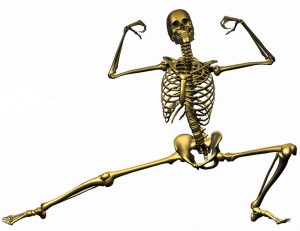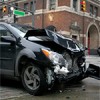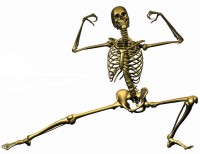 Exercise After Injury – Good or Bad?
Exercise After Injury – Good or Bad?
If you’ve been hurt in a car accident is exercise a good thing or a bad thing? It’s one of the first questions we hear when our Minneapolis/St. Paul Chiropractic clinic patients ask “Well what can I do?” After getting the answer to our question, “What were you doing before the injury?”, it becomes a matter of deciding and advising what’s going to be safest and allow you to heal and recover from what happened. Though exercise is a large topic, there are some general do’s and don’ts that apply:
- If it hurts don’t do it! (the “No Pain, No Gain” principal doesn’t apply here)
- Movement is key!
- Start slow and go easy!
- Warm up and cool down!
Pain is your signal that something’s hurt. Listen to it! It’s your body’s way of telling you what to do, and more importantly what not to do. The pain is coming from irritated and hurt nerves that are responding to the injuries that auto accidents create. These include tears and stretches of ligaments, muscles, and tendons (sprains and strains). Nerves and a variety of other tissues that surround and support the spinal (back and neck) and extremity (arms, legs, jaws) joints are also commonly injured, along with the joints themselves. The shock absorbing disc pads between the back bones may also be injured, and finally, acids in the swelling or inflammation that go along with all this injury can also irritate nerves. The very body parts used to do any motion, and those other postures that we don’t think of as active, like sitting, standing and laying down, are the ones that are injured. So, if the movement or posture hurts, it’s not time to do more of it. It’s time to do less of it. Exercise, a more “intense” use of the injured area, would only risk more damage or slow recovery.
Injuries first have to have time to heal and repair. It’s best not to aggravate them. Bodies are built to move. That’s why we have all the joints and muscles we do. The key to the motions are the joints. Injuries to the joints though, “shut” them down. They stop moving normally – they’re fixated. This produces more irritation to the nerves, or at least disrupts electrical signaling, which ends up producing other problems for our bodies, like how we feel things or how things are working. So, now we have a dilemma. The car accident resulted in injuries to this moving system, and we don’t want to aggravate things or make them worse. What has to happen to get through this are combinations of rest, movement and restricted or guided activity. We advise our patients to change positions and activities frequently in order to keep moving, and so they don’t keep using the same body parts over and over. This even means to not sit, stand or stay in one position too long, when that area is hurt. We want motion, but doing it within a pain free range, like don’t raise the arm all the way up if that is painful. Lifting, carrying, pushing, pulling, climbing, stooping and many other activities may have to be curbed too. Doing things like these may have to be done fewer times, or with less weight, or not at all. Again, movement is wanted rather than becoming a “couch potato”, but in a way that the situation is not made worse. Tiring more easily after injury is pretty natural. It takes energy to heal tissues, and activity that’s being done with injured parts takes more energy too. This “fatigue” signal is best listened to, just as is the “pain” signal.
Walking is a good first exercise, if it can be tolerated. It’s an “all-over” body movement activity, but needs to be started gradually and easily. Walking doesn’t “pound” the joints like running, so is better for healing joints and soft tissues like muscle and ligament. A 5 minute walk will often be just fine, and then repeated a number of times through the day as tolerated. When walking isn’t going to work, then sitting or laying down movements are available to do. With any exercise, motion or activity, the idea is to move, but not over-do. Any exercise can be too much, so its best to introduce it a little at a time, resting – even for a day or so to see if it was tolerated OK, then repeat it. And from there, to gradually increase the time and intensity of the exercise. This practice insures that the body is up to the activity, and without set-backs or worsening. Many want to do Too Much, Too Soon, not allowing healing tissues to build up a tolerance for the demands being placed on them. All this ends up doing is delaying or worsening the entire or complete recovery from the injury.
Easy stretching, even before walking, is a good idea, though some experts now feel that “static” stretching may weaken areas before exercise. In this instance we’re just intending a very easy, light use of the muscles to “get them working a little”. A good general stretch for the leg muscles is to simply lean forward at an angle with outstretched arms braced on a wall, and one leg behind the other, for 5-7 seconds. Then alternate leg positions, and repeat. The back and neck can be stretched by bending slightly in each direction, and holding that position for 5-7 seconds. When done walking, the process is repeated. This “preps” the muscles for the tightening and relaxing they will be doing, and then helps them “recover” by keeping them more flexible. Tight muscle can’t perform as well, or allow new fuel in, or get rid of “waste” products efficiently. This generally makes it harder for them to work. In our Minneapolis /St. Paul Chiropractic office we also provide and encourage our patients to use a simple, effective muscle management tool ahead of their stretching. By first “rolling” the muscles with the tool, new blood and oxygen (muscle fuel) is stimulated to come into the muscle. Then a stretch is performed, then the activity. “Rolling” after the exercise cleanses and relaxes the muscle. Then it is stretched, but now more efficiently, to help it recover and stay more flexible. These warm-ups and cool-downs are not only good for the healthy muscle to stay healthy, but really essential for the muscle recovering from an injury.
 Movement and exercise are important factors for health.Car accident injuries, or for that matter any injury that might result from work, sports or “life”, of necessity changes how all that is approached. Controlled, guided motion is critical. Avoidance of certain activity for a time is essential. “Listening” to the body’s signals is extremely important. Consulting with a skilled professional health practitioner is vital. It’s your body, and your health that’s at stake! If you wear it out, where are you going to live?
Movement and exercise are important factors for health.Car accident injuries, or for that matter any injury that might result from work, sports or “life”, of necessity changes how all that is approached. Controlled, guided motion is critical. Avoidance of certain activity for a time is essential. “Listening” to the body’s signals is extremely important. Consulting with a skilled professional health practitioner is vital. It’s your body, and your health that’s at stake! If you wear it out, where are you going to live?
By Dr. William T. Norlin Chiropractor in Minneapolis/St Paul, Minnesota











